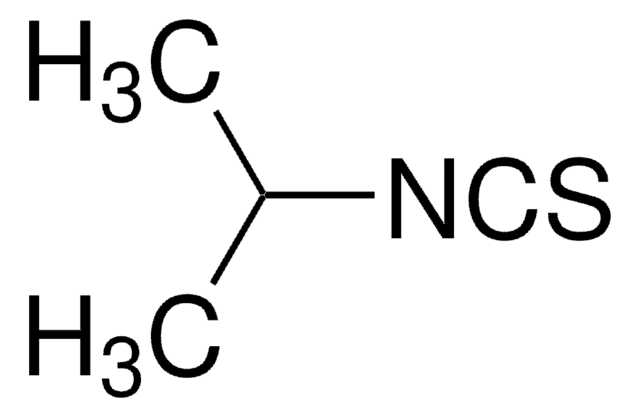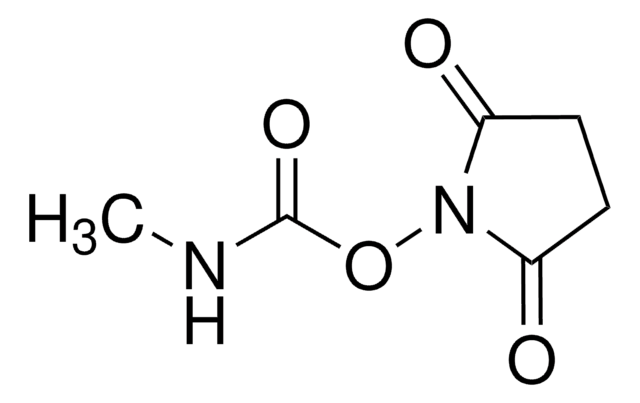112771
Methyl isothiocyanate
97%
Sinónimos:
Isothiocyanatomethane, Isothiocyanic acid methyl ester
About This Item
Productos recomendados
presión de vapor
21 mmHg ( 20 °C)
Nivel de calidad
Ensayo
97%
bp
117-118 °C (lit.)
mp
30-34 °C (lit.)
solubilidad
H2O: slightly soluble
densidad
1.069 g/cm3 at 25 °C (lit.)
grupo funcional
amine
isothiocyanate
cadena SMILES
CN=C=S
InChI
1S/C2H3NS/c1-3-2-4/h1H3
Clave InChI
LGDSHSYDSCRFAB-UHFFFAOYSA-N
¿Está buscando productos similares? Visita Guía de comparación de productos
Descripción general
Methyl isothiocyanate is an active chemical used as an anti-fermentative agent in wine and as an effective insecticide.
Aplicación
- For amino acid sequence analysis
- To study the effect of pesticide Metam (methyl isothiocyanate is its active ingredient) in the streamside microbial communities
Palabra de señalización
Danger
Frases de peligro
Consejos de prudencia
Clasificaciones de peligro
Acute Tox. 2 Dermal - Acute Tox. 2 Inhalation - Acute Tox. 3 Oral - Aquatic Acute 1 - Aquatic Chronic 1 - Eye Dam. 1 - Skin Corr. 1B - Skin Sens. 1 - STOT SE 3
Órganos de actuación
Respiratory system
Código de clase de almacenamiento
3 - Flammable liquids
Clase de riesgo para el agua (WGK)
WGK 3
Punto de inflamabilidad (°F)
86.0 °F - closed cup
Punto de inflamabilidad (°C)
30 °C - closed cup
Equipo de protección personal
Eyeshields, Faceshields, Gloves, type P3 (EN 143) respirator cartridges
Elija entre una de las versiones más recientes:
¿Ya tiene este producto?
Encuentre la documentación para los productos que ha comprado recientemente en la Biblioteca de documentos.
Los clientes también vieron
Nuestro equipo de científicos tiene experiencia en todas las áreas de investigación: Ciencias de la vida, Ciencia de los materiales, Síntesis química, Cromatografía, Analítica y muchas otras.
Póngase en contacto con el Servicio técnico











